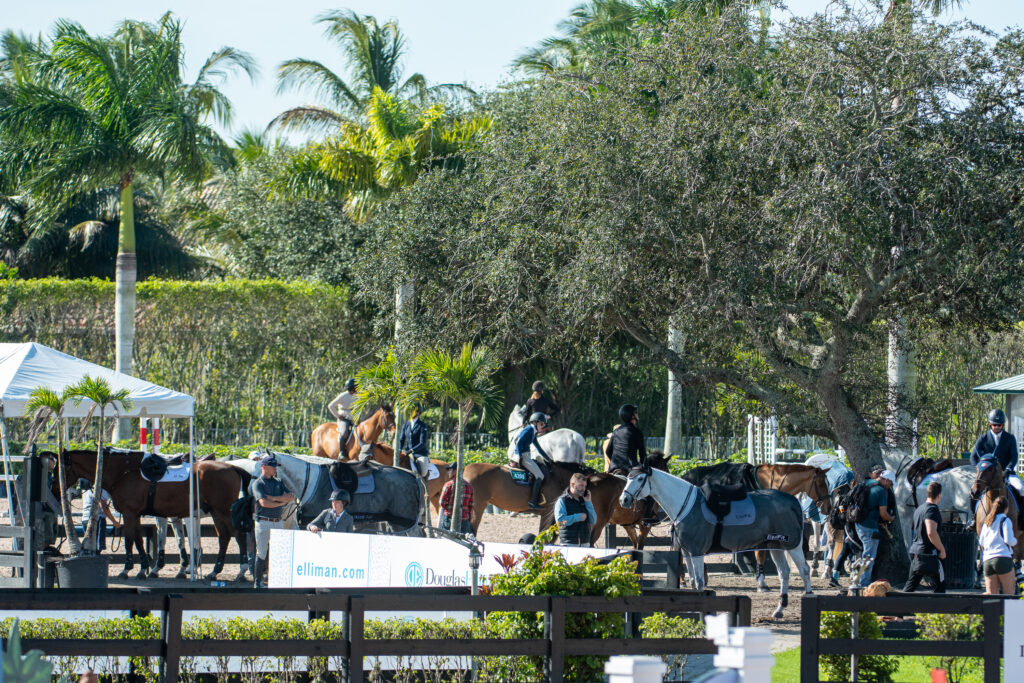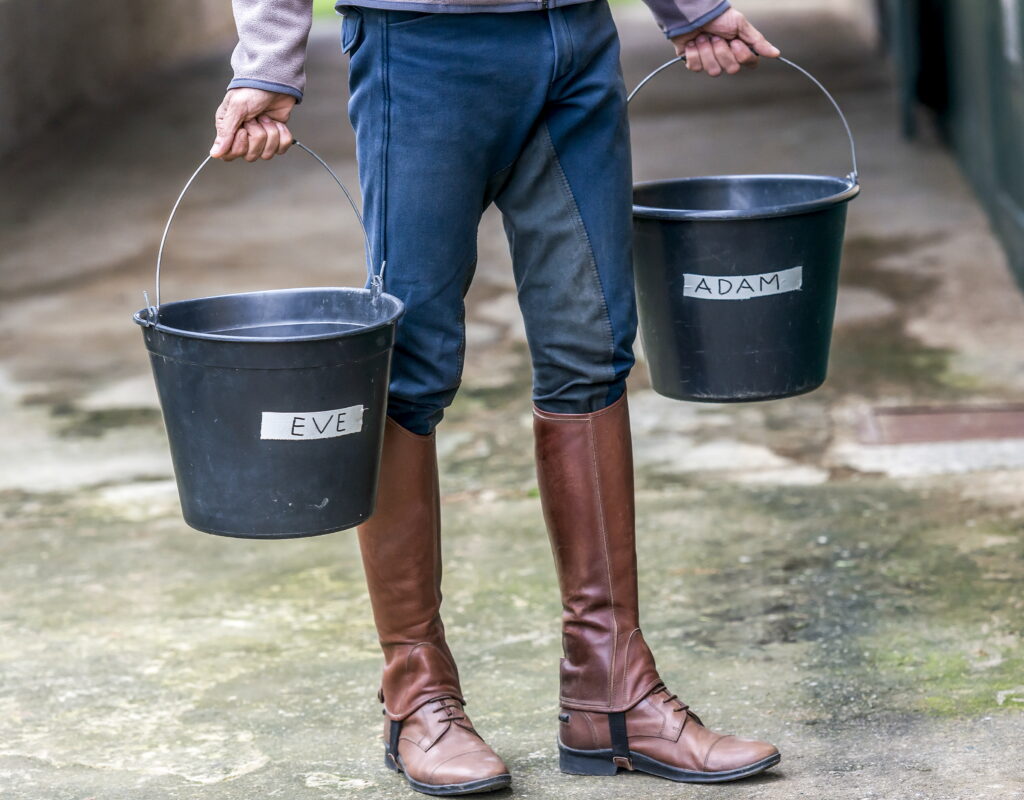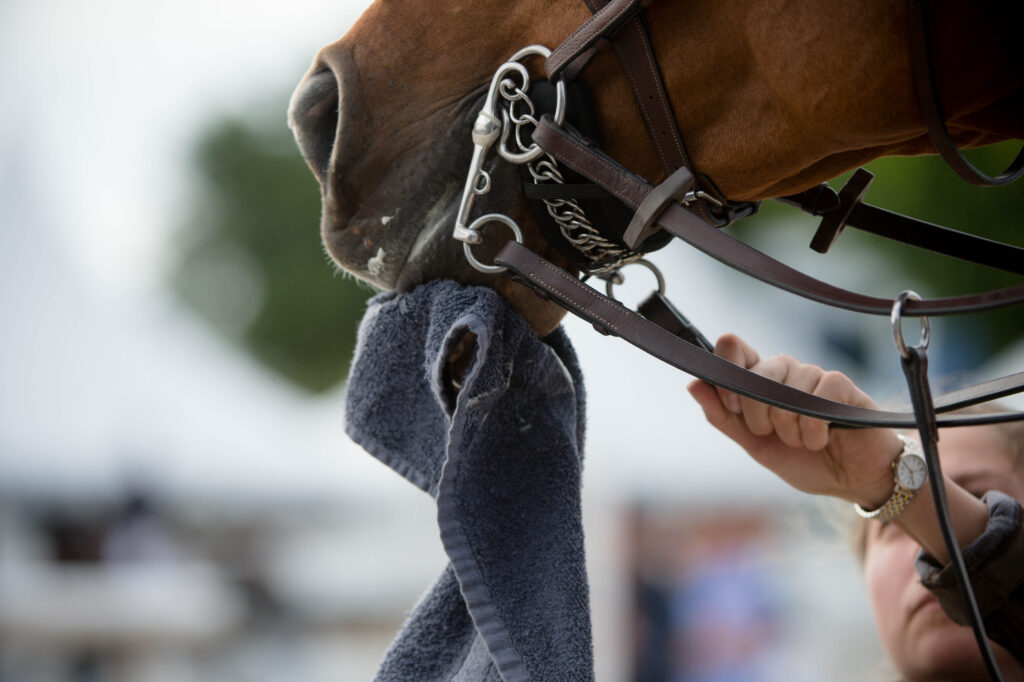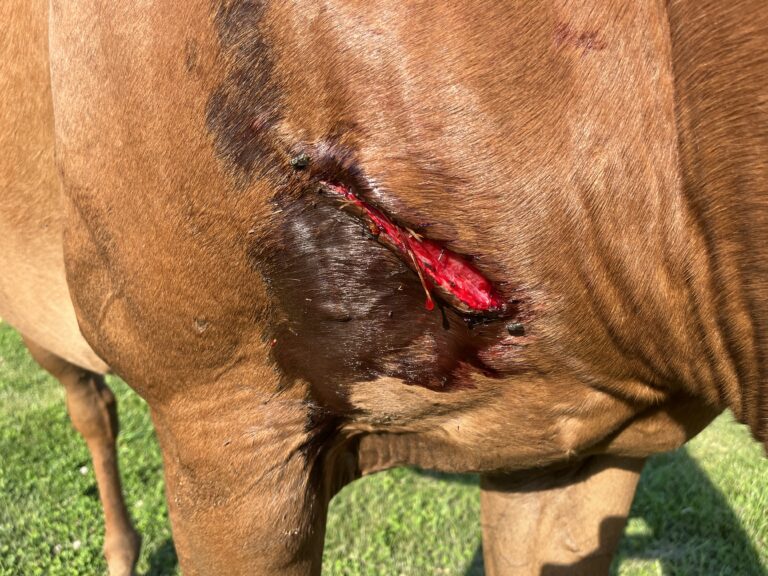Before the 2023 winter show circuits started, organizers at the Desert International Horse Park (DIHP) in Thermal, California, and the Wellington International in Florida implemented new biosecurity protocols for the season. This was in response to the nearly six-week outbreak of the equine herpesvirus in early 2022 at DIHP.

“Horse Health. Balanced. Science-Based. Sensible. These words have framed the discussion we have had over the last six months about what biosecurity measures to implement at the DIHP this upcoming season. Like you, we never want to experience an outbreak of EHV-1 ever again!” wrote DIHP President and CEO Steve Hankin in the introduction of the competition’s biosecurity protocols announced in the fall of 2022. “However, the EHV virus is endemic in any equine population and, although unlikely, there is always a small probability that it can manifest itself into EHV-1 or the more dangerous neurological form of the virus, EHM. That is why it is imperative that all of us take the necessary precautions and diligently employ biosecurity measures to mitigate the risk of virus spread.”
During the 2022 outbreak, 30 horses at DIHP became sick. Competition officials across the state temporarily shut down horse shows in the area. Still, by early March 2022, the Equine Disease Communication Center reported that in California, there were 86 cases of EHV-1, which can cause respiratory and neurologic issues among other problems in horses, and 11 cases of equine herpes myeloencephalopathy, the neurological disease syndrome caused by EHV-1.
Disease outbreak hasn’t been limited to the United States. The FEI (International Equestrian Federation) imposed a shutdown of international events in mainland Europe in early 2021 due to an ongoing outbreak of neurologic form of EHV-1. This included the 2021 FEI World Cup™ Finals for jumping and dressage, scheduled to be held in Gothenburg, Sweden, in early April.
The DIHP’s and Wellington International’s multipage biosecurity measures combine preventive measures—minimizing the chances of infected horses arriving at an event—with procedures for identifying and containing outbreaks as soon as possible. These include features such as scheduling arrival times, requiring that horses’ temperatures be taken twice a day and limiting entrance into stabling to the individuals with horses in the respective barns/tents. Additionally, the U.S. Equestrian Federation and the American Association of Equine Practitioners also have detailed biosecurity guidelines.
While, as Hankin mentioned, there’s no way to completely eliminate the risk of outbreaks at equine events, using the guidelines outlined by these organizations and associations can help you reduce the risk to your horse by being proactive, especially if you will be competing this spring and summer.
Here are some strategies these sources recommend:
Before a Show
1. Keep vaccinations up to date. Vaccination is an effective way to prevent your horse from contracting several serious diseases. The American Association of Equine Practitioners recommends that all horses receive vaccines against a “core” group of diseases: tetanus, eastern/western equine encephalomyelitis, West Nile virus and rabies. An additional 10 vaccines are available for horses at risk of encountering diseases such as EHV, equine influenza and Potomac horse fever.
Which of these risk-based vaccinations a horse needs depends on several factors, including his location, age and activities. Those who are frequently transported to horse shows, for example, require more protection than most “homebodies.”
Additionally, in 2015, the U.S. Equestrian Federation put a new vaccination rule into place. It requires competitors at all USEF-recognized competitions to provide documentation proving that their horses have been vaccinated for EHV and equine influenza within the previous six months.
Consult with your vet about creating a vaccination protocol tailored to your horse’s needs. Be sure to administer your horse’s vaccines at least two weeks prior to the show, if possible. This will give him time to develop an immune response.
2. Be informed. Even with your horse fully vaccinated, consult with your veterinarian and check the EDCC website (equinediseasecc.org) frequently for news of disease outbreaks in your area or in the area where you’ll be traveling for competitions. Very few vaccines are 100 percent protective. Before the competition, if there isn’t an official veterinarian on the showgrounds, ask your veterinarian to help you find the name and contact info for a local veterinarian in case of emergency. (Practical Horseman also publishes EDCC reports at practicalhorsemanmag.com and on its social media.)
3. Monitor your horse. This includes before, during and after the show. Be on the lookout for a cough, nasal discharge, swelling of the lymph nodes around the horse’s neck and jaw, loss of appetite, diarrhea, drooling or fever. Your horse’s temperature may increase slightly after shipping and exercise. Most horses’ temperatures also tend to be about a degree higher in the afternoons and evenings than in the mornings. Take your horse’s temperature twice a day and keep a log of it for several days before, during and after the competition. If it rises above normal—most events consider a temp above 101.5 F to be elevated—consult a veterinarian immediately. If your horse exhibits any signs of illness before the show, don’t go!
4. Check competition’s health document requirements. In addition to vaccination requirements, many competitions require a certificate of veterinarian inspection (CVI), a document ensuring that a horse has recently been evaluated by a veterinarian for signs of illness. USEF-recognized shows may require a USEF health declaration document stating that a horse has not had a fever over 101.5 degrees F or disease for 72 hours prior to arrival at the event.

At the Competition
Don’t assume that all of the horses at a show are healthy. A horse that’s potentially shedding a pathogen in nasal secretions or in their manure may not look sick, so there’s potential for exposure. Additionally, a number of diseases can be passed from horse to horse on human hands and with shared tack and equipment. Here are some recommendations for limiting such exposure:
- A number of contagious diseases can be spread directly from horse to horse. So, avoid nose-to-nose contact, which is the most effective way of transmitting viruses.
- Similarly, do not graze your horse in common areas. To give him some fresh air, hand-walk him away from high-traffic areas instead.
- Avoid sharing tack, equipment, feed and water buckets, thermometers, wipe cloths or rub rags, etc., among horses. Ideally, each horse will have his own dedicated grooming brushes, blankets and sheets, bits and other items. Colored duct tape is a good way to mark each item to help avoid mix-ups—assign each horse his own color and use it to “tag” all of his equipment.
- Never give your horse water from a communal water trough. When filling buckets from a hose, don’t allow the nozzle to touch the buckets or surface of the water. Scrub your horse’s water bucket regularly and keep one dedicated brush for each bucket, if possible.
- Keep manure-management equipment separate from feeding equipment. Again, some pathogens can be spread via manure.
- If you are stabling overnight, ask the event organization if the stall was cleaned and disinfected. If you’re unsure, come prepared to clean and disinfect it yourself, paying attention to surfaces where your horse’s nose may come in contact with pathogens from a previous occupant, such as the rails in the front of the stall. Remember, many disinfecting products are less effective if used on organic material, such as manure and nasal discharges. Soap, water and a scrub brush are the best tools for removing these materials before disinfecting. Clean first, then disinfect.
- Wash your hands after handling each horse. As we’ve all learned after COVID-19, cleansing your hands is one of the simplest yet most effective ways to avoid spreading infection. Develop the habit of washing with soap regularly, and carry and use hand sanitizer.
- Post signs to discourage people from patting your horse.
- If your competition requires a bit check, ask the bit checker to don a fresh pair of disposable gloves (even consider bringing a pair in your pocket) before touching your horse’s mouth—or bring along a halter so you can remove the bridle for inspection.

Back at Home
- Keep a traveling horse separate from the resident herd for at least two weeks. It’s especially important to keep frequent travelers apart from pregnant mares and foals.
- Monitor your traveling horse’s body temperature and look for signs of disease. If he develops a fever or otherwise appears sick, contact your veterinarian and implement your farm’s heightened biosecurity program.
- Clean and disinfect your tack and equipment when you return home from an event. Practically everything that touches your horse picks up bacteria and other pathogens as well as dirt and grime. Machine washables, such as towels, blankets and saddle pads, can be disinfected in regular laundry cycles, or if your washer has one, the sanitization cycle, which uses steam or extra high heat to kill even more bacteria. Buckets, hoof picks and other impermeable objects can be disinfected with soapy water, bleach or other commercial cleaners. Sponges are difficult to disinfect. Discard and replace them whenever they get dirty.

Disinfect Buckets, Brushes and Other Tools
The grime that builds up on grooming brushes and other tools is more than just unsightly; it may harbor bacteria and fungi that can cause a number of diseases. Any tools that come in contact with your horse or his wastes—including muck buckets, shovels, wheelbarrows and hoof picks—ought to be sanitized with a disinfectant periodically. It’s especially important to sanitize any tools you’ve used caring for a sick horse. Here are the basic steps:
- Scrape or knock off any hair or caked-on dirt and debris.
- Clean with a squirt or two of dish or laundry detergent in a gallon or more of water. Scrub your grooming brushes against each other to remove all dirt; use scrub brushes on larger tools and buckets.
- Rinse thoroughly with clean water.
- Disinfect: Soak the tools in a commercial sanitizer, such as phenol, quaternary ammonium, accelerated hydrogen peroxide or a peroxygen-based product, or a mild bleach solution for at least 10 minutes as recommended by your veterinarian. The type of disinfectant needed will vary with the targeted microorganism and the surface of the material being cleaned. Read the labels for handling instructions and safety precautions.
- Rinse feed and water buckets thoroughly, making sure no soap or chemical residue remains.
- Set the items out in bright sunlight to dry—the ultraviolet light will kill more pathogens.
Digitized Health Records
More competitions are using software to be able to access digitized health records. At the 2022 MARS Maryland 5 Star at Fair Hill, the competition’s veterinary team used Equine MediRecord (EMR) to collect required health information for horses competing in the U.S. Eventing Association’s Young Event Horse East Coast Championship.
The EMR system helps competition veterinarians determine which of the horses entered are compliant with vaccination requirements and other health paperwork.
If events require competitors to take part in EMR, the competition pays the fees. Competitors also can create their own accounts. They are then able to access competitions’ health record requirements and electronically send the material before going to the event.
For more information, visit equinemedirecord.com.
This article originally appeared in the Spring 2023 issue of Practical Horseman.











